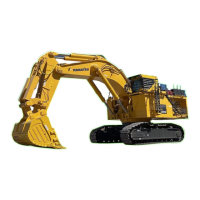2.1 SAFETY INSTRUCTIONS SAFETY
20
2.1.5 SAFETY INSTRUCTIONS GOVERNING SPECIFIC OPERATIONAL
PHASES
STANDARD OPERATION
● Avoid any operational mode that might be prejudicial to
safety.
● Before beginning work, familiarize yourself with the surround-
ings and circumstances of the site, such as obstacles in the
working and travelling area, the soil bearing capacity and any
barriers separating the construction site from public roads.
● Take the necessary precautions to ensure that the machine is
used only when in a safe and reliable state.
Operate the machine only if all protective and safety-oriented
devices, such as re- movable safety devices, emergency
shut-off equipment, sound-proofing elements and exhaust-
ers, are in place and fully functional.
● Check the machine at least once per working shift for obvious
damage and defects. Report any changes (incl. changes in
the machine’s working behaviour) to the competent organiza-
tion/person immediately. If necessary, stop the machine
immediately and lock it.
● In the event of malfunctions, stop the machine immediately
and lock it. Have any defects rectified immediately.
● Start the machine from the driver’s seat only.
● During start-up and shut-down procedures always watch the
indicators in accordance with the Operation,- Lubrication and
Maintenance Manual.
● Before starting up or setting the machine in motion, make
sure that nobody is at risk.
● Before starting work or travelling with the machine, check that
the braking, steering, signalling and lighting systems are fully
functional.
● Before setting the machine in motion always check that the
accessories have been safely stowed away.
● When travelling on public roads, ways and places always
observe the valid traffic regulations and, if necessary, make
sure beforehand that the machine is in a condition compatible
with these regulations.
● In conditions of poor visibility and after dark always switch on
the lighting system.
● Persons accompanying the driver must be seated on the pas-
senger seat provided for this purpose.
● When crossing underpasses, bridges and tunnels or when
passing under overhead lines always make sure that there is
sufficient clearance.

